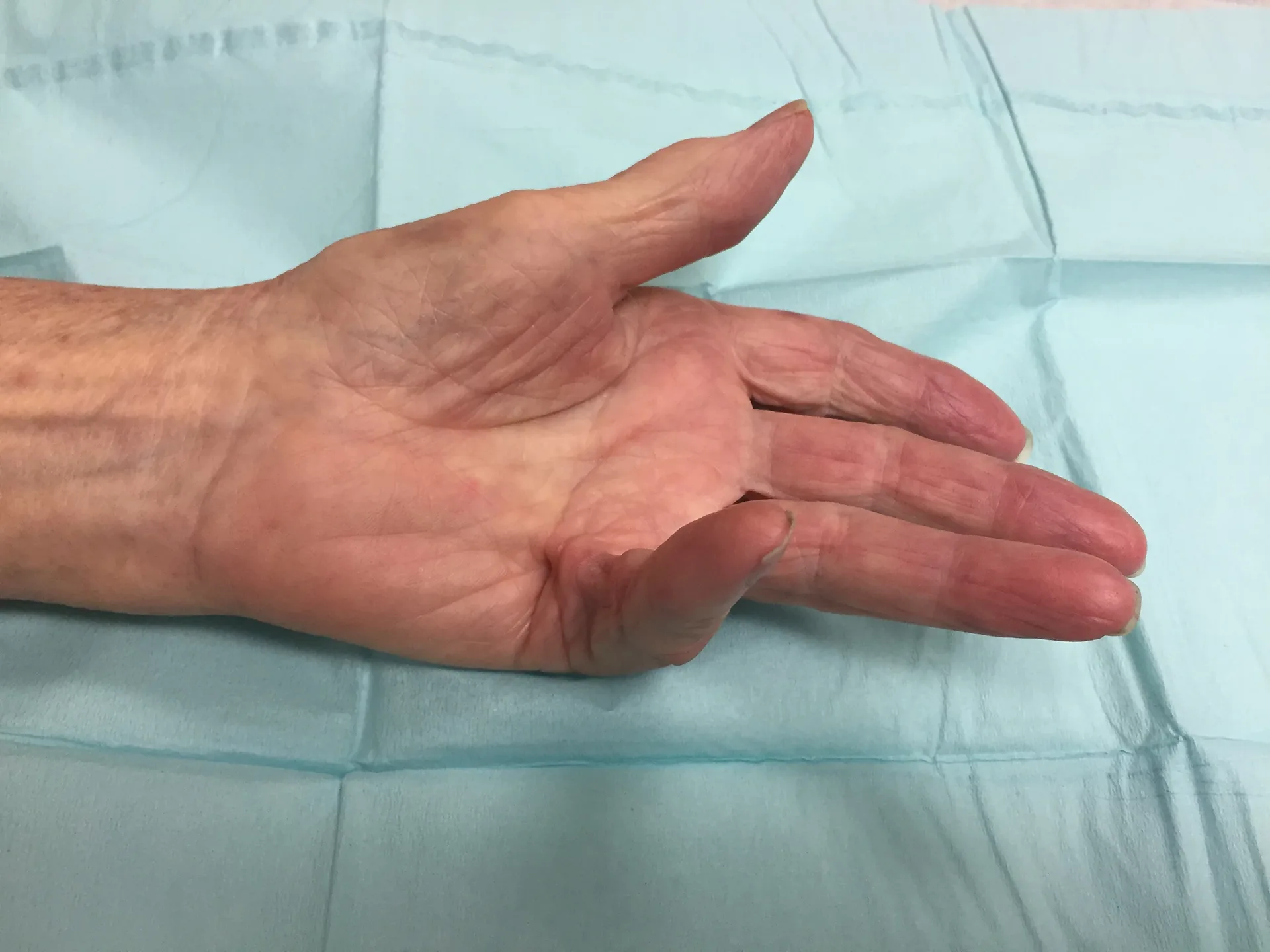Dupuytren’s Contracture is a common condition affecting the hands. Patients with this condition develop nodules in the palms followed by fibrous cords extending into the fingers. In many patients, the cords gradually contract and cause the fingers to bend or flex. If left untreated, the fingers may remain permanently bent and impair hand function. Activities such as shaking hands, wearing gloves, and reaching into a pocket can be difficult. Fortunately, if treated in the early stages of contracture, the results are usually good to excellent and the results frequently last many years.
In mild forms of the disease, intervention is not always required. Once a finger contracts to the extent where the palm cannot be placed flat on a table top, it is usually time for treatment.
There is no cure for Dupuytren’s disease. The goal of treatment is to remove or break up the contracted palmar cords to allow for improved finger range of motion and better hand function. Recurrence of the contracture is possible with any of the available treatments. There are 3 main techniques used by hand doctors today:
Surgical excision (Dupuytren’s fasciectomy): this surgery is performed by the hand doctor in the operating room under the care of an anesthesiologist. During surgery the diseased, contracted Dupuytren’s tissue is removed through incisions in the palm. Patients are treated with splinting, wound care, and hand therapy for a few weeks during the recovery process. Results from surgery can last a lifetime and typically the results last many years.
Needle aponeurotomy (percutaneous fasciotomy): this less-invasive procedure is performed by the hand doctor in the office using the tip of a needle to perforate the Dupuytren’s cord using local anesthesia. Once the Dupuytren’s cords are weakened, the finger can be manipulated and straightened. Recurrence is common with this technique, but it is the least expensive option and has minimal downtime. The technique can be repeated for recurrent contractures in the future. Not all patients are good candidates for this procedure.
Collagenase enzyme (Xiaflex): this medication is used to treat Dupuytren’s contracture and was FDA approved in the United States in 2010. Xiaflex is an enzyme which dissolves the collagen fibers in Dupuytren’s cords. The Xiaflex injection is performed by the hand doctor in the office, and later that week the patient returns for a manipulation procedure under local anesthesia. The surgeon then manually pops the cord once it has been weakened by the Xiaflex medication. Patients are instructed in home exercises and splinting by therapy, and there is minimal downtime required after the procedure. Recurrence is common with this technique, but it can be repeated for recurrent contractures. Not all patients are good candidates for this procedure
As with any medical procedure, there are possible complications from these treatments. Complications from Dupuytren’s surgery include infection, poor wound healing, bleeding, swelling, hand stiffness, and nerve/artery injury. Complications from needle aponeurotomy include skin tears, nerve injury, and infection. Complications from Xiaflex include flexor tendon rupture, allergic reactions, hand swelling, bruising, lymph node swelling, and skin tears.
Dupuytren’s surgery, Xiaflex injection, and needle aponeurotomy are available at Raleigh Hand Center. Call 919-872-3171 to schedule a consultation with a hand doctor.



